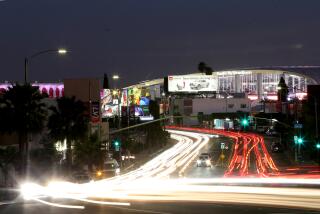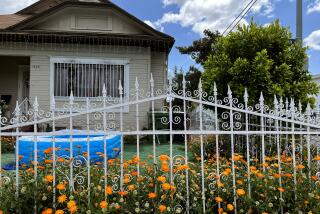Horse-and-Buggy Town a Model for Future Suburbs : Development: Tomorrow’s residential community may be dense enough to allow one to walk to the grocer’s.
RESTON, Va. — Robert E. Simon 30 years ago was just another frustrated commuter with a typical American dream: to live and work in a place that had both the spark of the city and the spirit of the country.
This frustrated commuter, however, was also the owner of Carnegie Hall. So he sold it and used some of the proceeds to buy a farm 20 miles west of Washington, D.C. Here, in 1962, he started to build his rebuttal to the web of highways, housing tracts and shopping centers that had begun to take over Fairfax County, Va., and much of the rest of America.
Reston--its name derived from Simon’s initials--was designed to recreate the excitement and diversity of Manhattan’s 57th Street in a peaceful, rural setting.
Yet instead of changing the suburban landscape, Reston became a part of it. It was a community of 50,000 with lots of trees, homes and playgrounds, offices and stores, and streets with names such as “Gallant Fox Court,” but it had little urbanity and no center.
Now, drawing on an unexecuted part of Simon’s original plan, the nation’s most famous “new town” is finally getting an urban core. A grid of streets and sidewalks, a public square and office buildings are being carved out of the woods.
The same notion is catching on across the nation: Replace or at least modify suburbs with compact settlements that mix homes and businesses in a way that gets people out of their cars and back in touch with each other.
This comes at a time when many of the most affluent suburban areas are resisting growth.
Fairfax County, for instance, has more offices and stores than most major cities, but there is a feeling that paradise is getting too crowded. Pro-development officials have been voted out, and in neighboring Loudon County the most popular bumper sticker reads: “Don’t Fairfax Loudon.”
The obvious solution--stopping or slowing growth --has been popular wherever suburbia’s economic boom threatened the clean, quiet, spacious life that attracted people to the country in the first place.
These well-intentioned movements have just one flaw, according to University of California-Riverside political scientist Max Neiman: They don’t work. Developers always find another community that wants their business, and sometimes it’s the one next door.
Is there no alternative to more concrete and traffic?
No.
Commuters might as well make the best of the inevitable, Anthony Downs of the Brookings Institution said. Get a comfortable, air-conditioned car and equip it with a stereo radio, tape deck, telephone and Dictaphone. Share your long ride with someone you really like.
His point: As long as people live in houses with big yards and drive long distances alone to work, traffic congestion will be the only way to “reconcile the competing desires of thousands of people to travel to the same destinations, over the same roads, at the same time.”
A rival scheme--build more roads--has an undeniable logic, but widening congested highways often produces nothing more than wider congested highways. And who will pay for them? The federally sponsored interstate highway system is 98% completed and Congress has not approved an addition in eight years.
That leaves a third alternative: build new the suburbs to resemble the old towns.
“The newest idea in planning,” Miami architect Andres Duany is fond of saying, “is the 19th-Century town.”
When given a choice of living in a city, a suburb, on a farm or in a small town, Americans invariably say they prefer the last. Duany is playing on these fond, if hazy, impressions of small town life to sell more dense, more urbane suburbs with tight grids of streets and squares that place offices, stores and recreation areas within walking distance of homes.
The 39-year-old architect sits in his office and, between sips of sweetened Cuban coffee, explains where earlier developers went wrong.
Centuries-old town planning went out of style after World War II. Americans were tired of life in the crowded, dirty, industrial city, and suddenly a confluence of cheap money, land, gasoline, cars and highways allowed them to escape.
Suburbs exploded in scale, to the point where, in the expansive new communities of the South and Southwest, people must drive a car to do almost anything, Duany says. And many of these newer suburbs are designed as giant cul-de-sacs, with only a few access streets dumping all the traffic into one jammed through street.
Perhaps the best example of the new planning is Seaside, Fla., a resort hamlet where Duany and his wife, architect Elizabeth Plater-Zyberk, have tried to recreate an old-fashioned Southern community, using a strict building code.
Their real ambition, though, is to take the elements of suburbia--the shopping mall, the cul-de-sac, the vast parking lot--and revise them to allow suburbs to expand not by spreading out, but by becoming more dense.
The neotraditional suburb that Duany foresees has a central village green or square lined surrounded by buildings instead of a golf course. Shops, offices, restaurants and bars occupy the lower floors and there are apartments upstairs. Instead of broad, curving cul-de-sacs streets, the town has straight, narrow, through streets that creating a sense of being enclosed.


